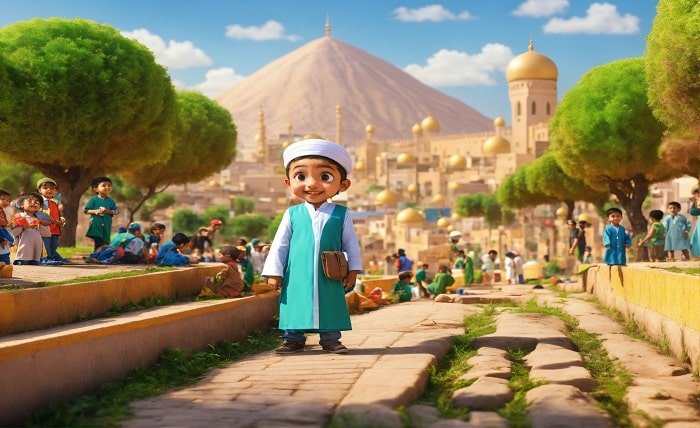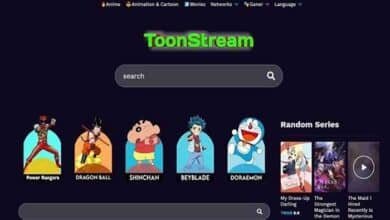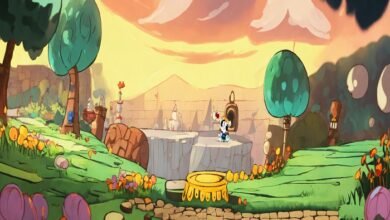The Evolution of Toon Cartoons: A Deep Dive into Their Impact and Legacy

Toon cartoons have long been a vibrant and cherished part of our entertainment landscape. From the early days of animation to the modern era, toon cartoons have captured our imaginations, offering a mix of humor, creativity, and nostalgia. In this blog post, we’ll explore the evolution of toon cartoons, their cultural impact, and what makes them a beloved genre across generations.
The Origins of Toon Cartoons
Toon cartoons have their roots in the early 20th century when animation pioneers began experimenting with moving images. The first toon cartoons were simple, hand-drawn animations that captivated audiences with their novelty. These early toon cartoons laid the groundwork for the complex and sophisticated animations we enjoy today.
The concept of toon cartoons was revolutionary at the time, providing a new medium for storytelling and humor. As technology evolved, so did toon cartoons, incorporating more intricate designs and narratives. The pioneers of toon cartoons, such as Walt Disney and Max Fleischer, played a crucial role in shaping the genre’s direction.
Iconic Characters in Toon Cartoons
No discussion of toon cartoons is complete without mentioning the iconic characters that have become synonymous with the genre. Characters like Mickey Mouse, Bugs Bunny, and Scooby-Doo have left an indelible mark on popular culture. These toon cartoon characters have transcended their original medium, appearing in various forms of media and merchandise.
The appeal of these characters lies in their distinct personalities and universal themes. Toon cartoon characters often embody traits that resonate with audiences, making them relatable and memorable. The evolution of these characters over time reflects changes in society and tastes, yet their core essence remains endearing.
The Golden Age of Toon Cartoons
The Golden Age of toon cartoons refers to the period between the 1920s and 1960s when animation studios produced some of their most celebrated works. This era saw the rise of classic toon cartoons that continue to influence contemporary animation. The success of toon cartoons during this time was driven by innovations in animation techniques and storytelling.
Studios like Disney, Warner Bros., and Hanna-Barbera produced toon cartoons that became cultural landmarks. These toon cartoons featured inventive animation styles, memorable music, and engaging storylines that captivated audiences of all ages. The Golden Age of toon cartoons set high standards for animation quality and creativity.
Toon Cartoons and Technological Advancements
As technology advanced, so did toon cartoons. The transition from hand-drawn animation to computer-generated imagery (CGI) marked a significant shift in how toon cartoons were produced and experienced. CGI allowed for more dynamic and visually stunning toon cartoons, expanding the possibilities for animation.
The integration of digital tools and techniques has also impacted the production process of toon cartoons. Modern toon cartoons often incorporate elements of 3D animation, special effects, and interactive features. These advancements have enhanced the overall quality and appeal of toon cartoons, attracting new generations of viewers.
The Global Impact of Toon Cartoons
Toon cartoons are not confined to a single region or culture. Their influence extends globally, with toon cartoons from different countries contributing to a diverse and rich animation landscape. International toon cartoons offer unique perspectives and styles, reflecting the cultural nuances of their creators.
The global appeal of toon cartoons is evident in their widespread distribution and popularity. Toon cartoons have the power to transcend language barriers and cultural differences, resonating with audiences worldwide. This international reach has helped shape the global animation industry and foster cross-cultural exchange.
The Role of Toon Cartoons in Childhood Development
Toon cartoons play a significant role in childhood development. They serve as a source of entertainment, education, and socialization for young viewers. Toon cartoons often incorporate moral lessons, problem-solving skills, and creative thinking, contributing to children’s cognitive and emotional growth.
Parents and educators recognize the value of toon cartoons in providing positive role models and fostering imagination. The engaging and playful nature of toon cartoons makes them an effective tool for teaching various concepts and values to children. As such, toon cartoons continue to be an integral part of childhood experiences.
Toon Cartoons and Pop Culture Phenomena
Toon cartoons have consistently influenced pop culture and media. They have inspired various forms of entertainment, including films, video games, and merchandise. The popularity of toon cartoons often extends beyond the screen, becoming a significant part of cultural trends and consumer products.
Pop culture references to toon cartoons can be seen in various media, highlighting their enduring impact. From parodies and homages to merchandise and theme parks, toon cartoons have become a cultural phenomenon that continues to shape and reflect societal trends.
The Evolution of Toon Cartoons in the Digital Age
In the digital age, toon cartoons have evolved to embrace new platforms and technologies. Streaming services, social media, and digital distribution have transformed how toon cartoons are produced, distributed, and consumed. The digital landscape offers new opportunities for creators to reach audiences and experiment with innovative formats.
The rise of online platforms has also led to the emergence of web-based toon cartoons and animated series. These digital toon cartoons often explore niche genres and experimental storytelling, reflecting the diverse interests of modern viewers. The digital age has expanded the reach and variety of toon cartoons, catering to a global audience.
Challenges Facing the Toon Cartoon Industry
Despite their popularity, the toon cartoon industry faces several challenges. The competition for viewers’ attention, changing consumer preferences, and rising production costs are some of the issues affecting toon cartoons. Additionally, the rapid pace of technological advancements requires constant adaptation and innovation.
To address these challenges, animation studios and creators must stay abreast of industry trends and audience preferences. The success of toon cartoons in the future will depend on their ability to balance creativity, technology, and market demands. Adapting to these challenges while maintaining the essence of toon cartoons will be crucial for their continued success.
The Future of Toon Cartoons
The future of toon cartoons holds exciting possibilities. As technology continues to advance, toon cartoons will likely incorporate even more sophisticated animation techniques and interactive elements. The growing diversity of content and global perspectives will further enrich the toon cartoon genre.
Emerging trends, such as virtual reality (VR) and augmented reality (AR), have the potential to transform how toon cartoons are experienced. These technologies could offer immersive and interactive experiences, allowing viewers to engage with toon cartoons in new and innovative ways. The future of toon cartoons promises to be dynamic and vibrant, reflecting the ever-changing landscape of entertainment.
Conclusion
Toon cartoons have come a long way from their humble beginnings, evolving into a beloved and influential genre that continues to captivate audiences of all ages. From the iconic characters and Golden Age classics to the technological advancements and global impact, toon cartoons have left an indelible mark on our cultural landscape.
FAQs
1. What are toon cartoons?
Toon cartoons are animated television shows or films that feature a variety of characters and stories, often characterized by their humorous and imaginative content. They can be hand-drawn or computer-generated.
2. Who were some of the pioneers of toon cartoons?
Pioneers of toon cartoons include Walt Disney, who created Mickey Mouse, and Max Fleischer, known for his Fleischer Studios animations. These early innovators played a key role in shaping the toon cartoon industry.
3. How have toon cartoons evolved over time?
Toon cartoons have evolved from simple hand-drawn animations to complex CGI productions. Technological advancements, such as digital animation and streaming platforms, have expanded the possibilities for toon cartoons.
4. What impact have toon cartoons had on global culture?
Toon cartoons have had a significant impact on global culture by transcending language barriers and cultural differences. They have influenced various forms of media and become a part of pop culture phenomena worldwide.
5. What challenges does the toon cartoon industry face?
The toon cartoon industry faces challenges such as competition for viewers’ attention, changing consumer preferences, and rising production costs. Adapting to technological advancements and market demands is crucial for the industry’s success.





